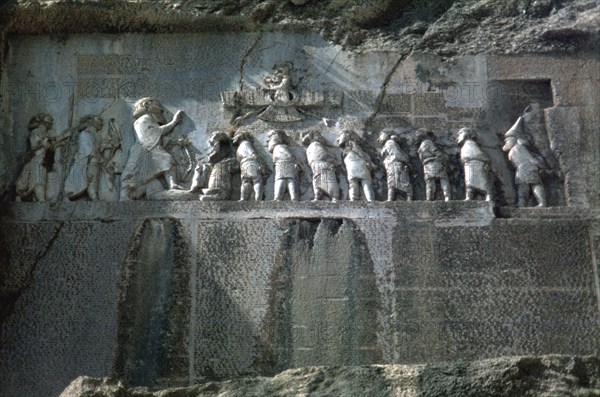
Sujet
Detail of trilingual relief of Darius, Bisitun, Iran
Légende
Detail of trilingual relief of Darius, Bisitun, Iran. This relief is the equivalent to cuneiform of what the Rosetta Stone represents to the understanding of Egyptian hieroglyphics. Carved into a cliff above an ancient road in the foothills of the Zagros Mountains, it tells the story of the reign of Darius I, who ruled Persia from 521 to 486 BC. The same text is repeated in three languages, Old Persian, Elamite and Babylonian. In the 1830s and 1840s A British army officer, Sir Henry Rawlinson, had the inscriptions transcribed and was able to translate first the Persian, and later with the help of others, the Elamite and Babylonian texts. The carvings are high above the road and are in fact illegible from it. It is believed that Darius' main concern was to make the reliefs proof from tampering by siting them in a relatively inaccessible position.
Date
1996
Crédit
Photo12/Heritage Images/Vivienne Sharp
Notre référence
HRM19D57_302
Model release
Non
Licence
Droits gérés
Format disponible
49,9Mo (3,4Mo) / 43,5cm x 28,8cm / 5135 x 3399 (300dpi)